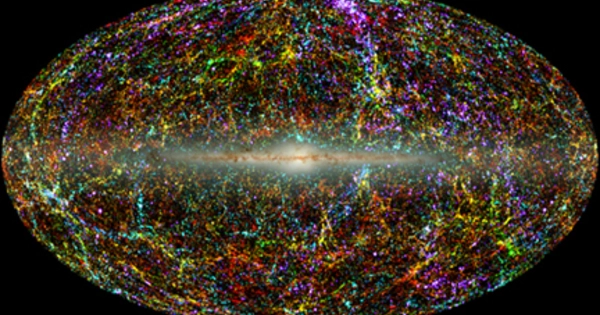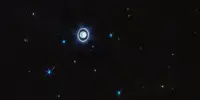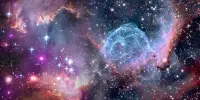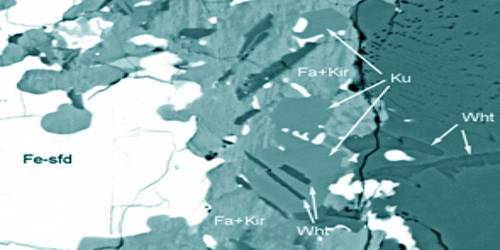A million galaxies to study in order to comprehend the beginnings of the universe is a large and ambitious scientific project. A research endeavor of this nature will almost certainly require the utilization of modern telescopes, observational techniques, and data analysis technologies. Researchers examined over one million galaxies to investigate the primordial variations that triggered the construction of the universe’s structure.
According to a new study published in Physical Review D as an Editors’ Suggestion, a team of researchers investigated more than one million galaxies to investigate the formation of today’s cosmic architecture.
Until today, precise observations and analyses of the cosmic microwave background (CMB) and large-scale structure (LSS) have led to the establishment of the standard framework of the universe, the so-called ΛCDM model, where cold dark matter (CDM) and dark energy (the cosmological constant, Λ) are significant characteristics.
This concept proposes that primordial fluctuations were formed at the beginning of the universe, or in the early cosmos, and that these fluctuations functioned as triggers, resulting in the creation of all things in the universe, such as stars, galaxies, galaxy clusters, and their spatial dispersion throughout space. Although they are relatively small when they are created, the gravitational pulling force causes fluctuations to build over time, eventually becoming a dense region of dark matter, or a halo. Then, many halos clashed and fused with one another, resulting in the formation of celestial objects such as galaxies.
In this research, we were able to impose constraints on the properties of the primordial fluctuations through statistical analysis of the ‘shapes’ of numerous galaxies obtained from the large-scale structure data.
Toshiki Kurita
Because the nature of the spatial distribution of galaxies is heavily impacted by the nature of the primordial fluctuations that generated them in the first place, statistical investigations of galaxy distributions have been actively done to investigate the nature of primordial fluctuations. Furthermore, the spatial pattern of galaxy forms scattered throughout a large area of the universe reflects the nature of the underlying primordial oscillations.
However, traditional analyses of large-scale structures have only looked at the spatial distribution of galaxies as points. Researchers have recently begun examining galaxy morphologies because they not only provide extra information but also provide a distinct viewpoint on the nature of the primordial fluctuations.
A team of researchers, led by at-the-time Kavli Institute for the Physics and Mathematics of the Universe (Kavli IPMU) graduate student Toshiki Kurita (currently a postdoctoral researcher at the Max Planck Institute for Astrophysics), and Kavli IPMU Professor Masahiro Takada developed a method to measure the power spectrum of galaxy shapes, which extracts key statistical information from galaxy shape patterns by combining the spectroscopic data of the spatial distribution of galaxies and imaging data of individual galaxy shapes.

The researchers examined the spatial distribution and shape patterns of about one million galaxies from the Sloan Digital Sky Survey (SDSS), the world’s largest galaxies survey at the time.
As a result, they were able to constrain the statistical features of the primordial oscillations that seeded the construction of the universe’s structure. They discovered a statistically significant alignment of the outlines of two galaxies more than 100 million light-years apart. Their findings revealed similarities between distant galaxies whose development processes appear to be independent and causally unrelated.
“In this research, we were able to impose constraints on the properties of the primordial fluctuations through statistical analysis of the ‘shapes’ of numerous galaxies obtained from the large-scale structure data. There are few precedents for research that uses galaxy shapes to explore the physics of the early universe, and the research process, from the construction of the idea and development of analysis methods to the actual data analysis, was a series of trial and error. Because of that, I faced many challenges. But I am glad that I was able to accomplish them during my doctoral program. I believe that this achievement will be the first step to open up a new research field of cosmology using galaxy shapes,” said Kurita.
Furthermore, a detailed investigation of these correlations confirmed they are consistent with the correlations predicted by inflation, and do not exhibit a non-Gaussian feature of the primordial fluctuation.
“This study is based on Toshiki’s doctoral dissertation. It’s a fantastic research accomplishment in which we created a mechanism for validating a cosmological model using galaxy shapes and distributions, applied it to data, and then validated the physics of inflation. It was a novel research topic, but he completed all three steps: theory, measurement, and application. Congratulations! I am quite proud that we were able to complete all three steps. Unfortunately, I did not make the grand breakthrough of discovering a new physics of inflation, but we have laid the groundwork for future research. We expect the Subaru Prime Focus Spectrograph to open up new areas of research,” Takada stated.
The methods and results of this study will allow researchers in the future to further test inflation theory.
















